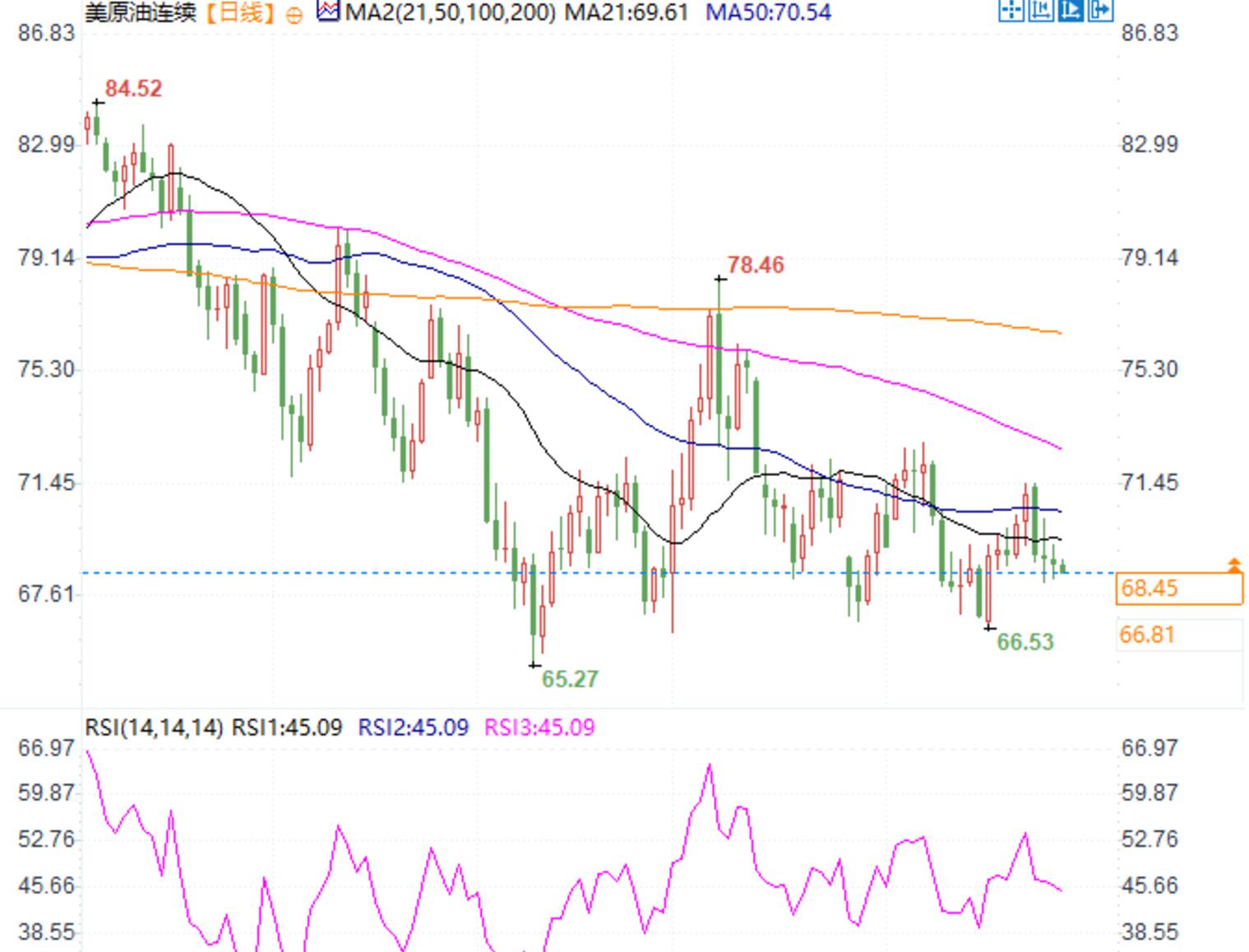OPEC unexpected policy or market disruption! Where will crude oil prices go?
On Tuesday (November 28th), Brent crude oil traded continuously at $72.03 per barrel, down 0.4% for the day; The continuous contract for US crude oil (WTI) was reported at $68.50 per barrel, a decrease of 0.32%. The overall market sentiment is weak, mainly due to the unexpected increase in US gasoline inventories and the slowdown in demand. At the same time, investors' attention is gradually shifting towards the upcoming OPEC+meeting this weekend, and it is expected that the results of the meeting may provide new guidance for oil prices.
Market Dynamics and Analysis
Recently, crude oil prices have been under continuous pressure. The latest data from the US Energy Information Administration (EIA) shows that as of the week ending November 22, US gasoline inventories unexpectedly increased by 3.3 million barrels, in sharp contrast to the small decline expected by the market. This data has a direct impact on the market, indicating weak growth in fuel demand before holidays. Combined with the sluggish trading during the Thanksgiving holiday in the United States, market trading volume decreased, further amplifying price fluctuations.
At the same time, the demand performance of the world's two major crude oil consuming countries is not satisfactory. Since the beginning of this year, the growth of fuel demand in both countries has significantly slowed down, which has become one of the important factors dragging down oil prices. Although the OPEC+production reduction policy has to some extent limited the downward space of crude oil prices, signals of weak demand still concern investors.
In addition, the temporary easing of geopolitical tensions has also weakened the upward movement of oil prices. The ceasefire agreement reached between Israel and Hezbollah in Lebanon came into effect this week, easing market concerns about potential disruptions to the Middle East supply chain. However, due to the complex geopolitical situation and uncertainty of ceasefire agreements, market participants generally believe that the risks have not been fully resolved.
The potential impact of OPEC+policy outlook on the market
OPEC+is scheduled to hold a meeting this Sunday to discuss production policies, and the market generally expects the organization to postpone its planned production increase actions. Some well-known institutions believe that the possibility of delaying production increases is partially reflected in the current oil prices, but the length of the delay is still a key variable affecting market expectations. If the delay time is extended to three months or more, it may provide short-term support for the market; But if the production increase is implemented according to the original plan, oil prices may face greater pressure.
According to previous policy frameworks, OPEC+has previously stated plans to gradually restore production in 2024 and 2025. Therefore, whether this meeting adjusts this path will directly determine the future trend of the market. Although delaying production increases is widely seen as a bullish factor, market participants remain cautious about the potential policy flexibility of OPEC+.
Analysis of Long term and Short term Driving Factors
In the long run, analysis by internationally renowned institutions such as Goldman Sachs and Morgan Stanley shows that current oil prices may be undervalued, especially in the context of a global supply gap. However, this view also faces some challenges, including potential supply risks to Iran and possible new sanctions in the future.
In the short term, weak demand continues to put pressure on prices. Especially during the peak travel season in the United States during Thanksgiving, fuel consumption was not significantly boosted, reflecting a weaker than expected market demand.
Future Trends and Prospects
Looking ahead, the short-term trend of oil prices will mainly depend on the following three points:
1. Outcome of OPEC+meeting: If the meeting decides to postpone production increase for a longer period of time, it will provide support for oil prices in the short term. But if the decision is lower than market expectations, oil prices may drop again.
2. Geopolitical situation: The stability of the Middle East ceasefire agreement remains to be observed, and its uncertainty may become a source of risk premium supporting oil prices.
3. Demand outlook: Demand performance remains a key variable.
Overall, although the current market sentiment is bearish, considering the potential policy adjustments of OPEC+and global supply shortages, there is still a basis for a rebound in crude oil prices in the medium to long term. However, in the short term, with mixed long and short factors, oil prices may maintain a volatile and weak pattern. Investors need to continue to monitor the dynamics of this weekend's OPEC+conference to better grasp market trends.


Tips:This page came from Internet, which is not standing for FXCUE opinions of this website.
Statement:Contact us if the content violates the law or your rights
